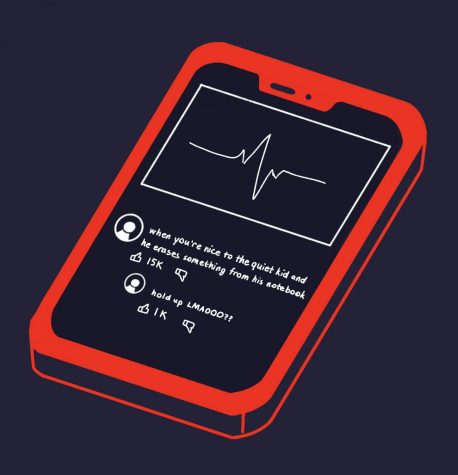Reflecting on the Run, Hide, Defend drills
Using humor as a coping mechanism for school violence
September 18, 2021
When I was in fourth grade, my school went on lockdown.
Twenty other students and I crouched behind a poorly constructed defense of desks and chairs for two hours, unable to see in the dark and not daring to speak. It felt like too much was happening at once. Someone was sobbing in a corner, the only exit was barricaded and I honestly thought we were all going to die.
Later, we learned that nothing actually happened and the lockdown was just a terrifyingly realistic drill. I’m sure most of my classmates from that school have forgotten about that incident. But sometimes, I wonder how the fear that a real incident might happen has become the subject of so many of our morbid jokes about our mortality.
When I first heard about the Parkland High School school shooting three years ago, I couldn’t look at anything but articles and videos detailing it for the rest of the day, no matter how nauseous the rising identified death count made me feel. The next week, my first period teacher read a poem to our class written shortly before the shooting by one of the victims, and the room was dead silent. The poem hit me like a ton of bricks. Suddenly, I understood that the tragedy wasn’t just some distant horror story from Florida — it was real and repeatable. I was scared to be at school for the next few weeks.
This unpredictability is a fear we’re all familiar with, especially in a country known for its questionable gun control laws, so the widespread desensitization and even stranger hilarity associated with it has been difficult to understand. References explicitly alluding to school shootings such as “the quiet kid” meme (which refers to the joke that social outcasts become school shooters) have always been startling to me, and serve as an unwelcome reminder of how normalized this fear is. Recently, however, I’ve started to understand their purpose.

A few weeks ago, my second period class butchered our first real lockdown drill in almost two years. We stacked two rows of desks at the front of the room, and not only were there far too many gaps, but the barricade was probably only three feet tall. The police officers’ reassurances that the barricade was adequate only prompted incredulous looks from my classmates. We then spent the rest of tutorial chortling about our inability to stay alive in the hypothetical shooting, and the conversation eventually devolved into a dry discussion about throwing books and a large fan at a potential intruder.
As we were walking out of the classroom after the drill, I peered over the balcony at the pavement 15 feet below, commenting, “I think we could just jump down if there was an actual shooter.”
“You’d probably break your neck,” my friend replied, and we laughed.
There’s nothing funny about school shootings, but the reality that we would be doomed in that classroom seemed much less ominous in the face of laughter. Joking about horrible possibilities is oddly relieving. Comedy has always been a kind of a safety net for me, forcing me to face the truth but softening the fall.
The truth is, as schools return to in-person learning, school shootings have once again become a looming threat – hardly a month into the school year, the internet is already active with news of an intercepted scheme in Florida, several bomb threats, and more, and just a few days ago, a student at Homestead High School was found to be in possession of a gun. Combined with the imminent danger of COVID-19, this fear can make attending school feel like a gamble sometimes. Until our situation changes for the better, I’d much rather make light of our reality rather than dwell on it.


















